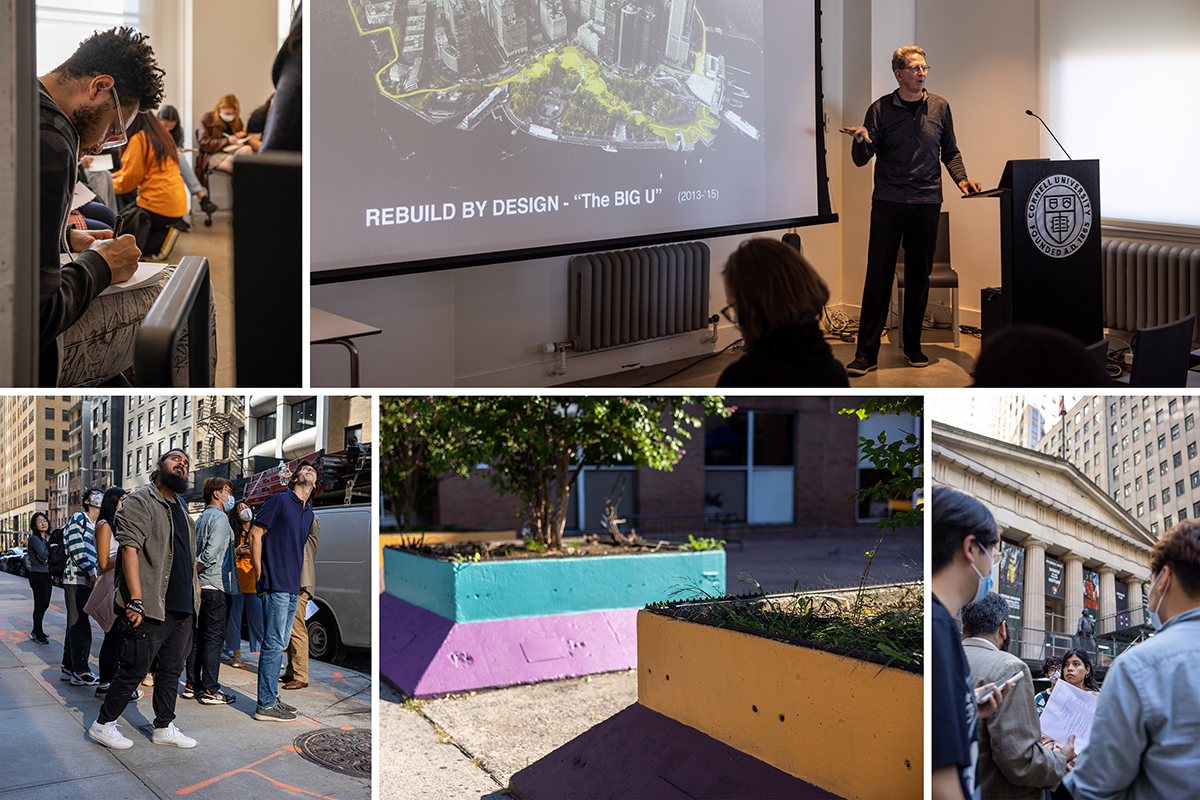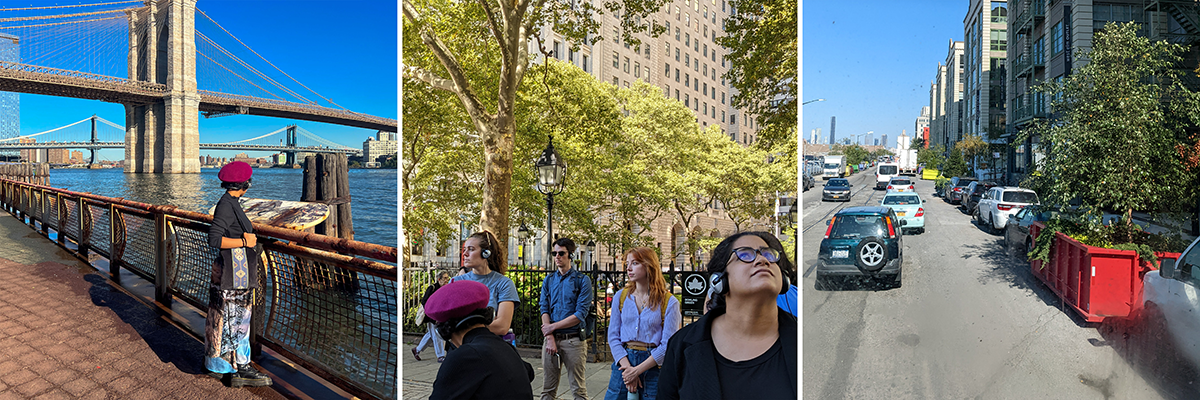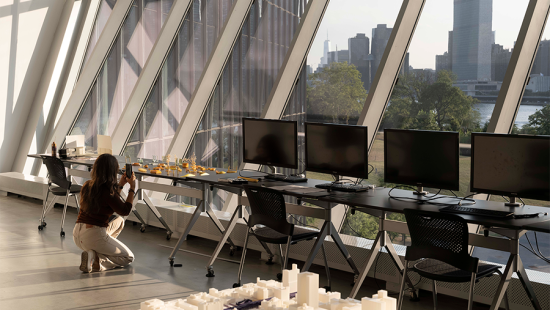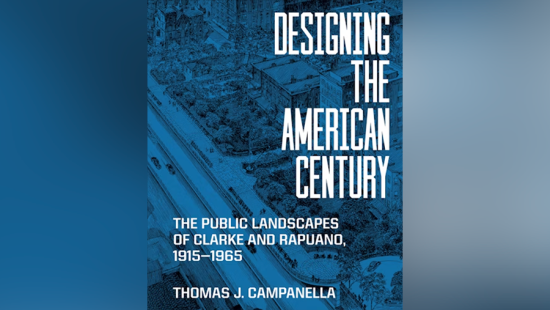Embracing the Audacity of Ambition: Future Planners Explore Challenging Climate Questions Facing the Field
Students participating in this year's City and Regional Planning fall field trip to sites across New York City considered the many ways climate change impacts urban environments — physically, economically, socially, and environmentally — as well as disparities in resources dedicated to adaptation in different parts of the city.

When developing plans and programs to build and strengthen communities, urbanists often face a host of competing challenges and perspectives that they must find creative ways to balance. This work becomes even more nuanced and difficult as considerations of the climate crisis and other social justice issues are brought with increasing urgency into the conversation.
College of Architecture, Art, and Planning (AAP) students participating in City and Regional Planning's (CRP) fall field trip titled Climate Resilience and Social Justice in the City faced these considerations head-on as they explored New York City and met with local policymakers and community organizations deeply embedded in addressing climate vulnerabilities and adaptive responses.

"Climate change poses an immense challenge for huge, dense, complicated places like New York, where every square inch is contested, expensive, and layered with diverse infrastructure systems," explained CRP Assistant Professor Linda Shi, who led this year's trip. "The physical challenge alone is daunting, yet most planners and urban change makers around the world do not yet recognize the impact of climate change and what we can do to adapt."
While in New York City from October 6–8, 51 first-year graduate planning students were asked to deeply consider the broad range of communities and how climate change is felt and experienced by each. Activities involved both close personal observations during tours of Battery Park City, the Financial District, the South Street Sea Port, and the Lower East Side, as well as intensive small-group experiences with organizations such as Universe City NYC in East New York, WE ACT in Harlem, and UPROSE in Sunset Park. AAP alumni also offered tours highlighting issues around community development, urban design, transportation, affordable housing, and historic preservation.

These intimate community-based engagements are the result of a transformation of the annual field trip's structure spearheaded by Shi, CRP Chair Sophie Oldfield, and Cornell Mui Ho Center for Cities Director Victoria Beard in partnership with AAP NYC Director Robert Balder. The outcome was a fantastic experiential learning opportunity, according to Oldfield. "Community-based work responds to the immediacy and the complex lived realities of increased heat, flooding, and extreme storms. Engaging and listening to activists and community-based leaders across New York City was inspiring and instructive," she said.
A key element of these discussions was exposure to the variety of ways that climate change impacts urban environments — physically, economically, socially, and environmentally — and the disparities in the resources dedicated to adapting different parts of the city. As an example, Shi cited places in Lower Manhattan that are receiving billions of dollars in funding, while those in Brownsville receive none. "It's not enough to think about helping cities adapt in general. We have to recognize the inequities in how cities adapt, which in the process often reveals how climate adaptation can simply be another form of historic environmental injustice."

The opportunity to step out of the classroom and engage with faculty, alumni, and leaders in the environmental justice and equity movement left a strong impression on the students. "Students are often uncomfortable with not having an answer, a best practice. But what we want them to learn early on in their time at Cornell, including through this field trip, is to be able to ask uncomfortable questions of themselves and of practice on the ground," Shi explained. In response to the trip, "they recognized that 'having an education does not mean you know better' than communities, the power in having the 'audacity of ambition,' and how much time and patience it takes to see real change."

During a debriefing session, students gathered together to share questions and comments inspired by their experiences and to synthesize the knowledge they had gleaned by listening to and engaging directly with different communities. On colorful sticky notes arranged around the room, they highlighted ways of working, including questioning who gets to be involved in decision making and centering what the community itself wants. They called out pressing needs, such as healthy and accessible food, job security, and affordable housing to avoid displacement in the face of gentrification. "This visit emphasized the importance of bottom-up planning in climate and community resilience," one student noted, underlining the importance of education. "Community resilience depends on an informed and engaged public." Another participant echoed that "it's important to empower the community to speak [rather] than 'speak for them'." Whether it was pointing out fenced public parks or poor parking options, reactions were passionate and exclamation point usage liberal.

While the students gained new understandings of issues beyond the classroom and how difficult the work could be, they also appeared to appreciate exposure to those working for change in the trenches. "Bringing real change to community involves [a] really long time and huge effort (30 years)," proclaimed a fluorescent yellow note, which in context read as both a hurdle to overcome and a goal line to cross.
Stay connected! Follow @cornellaap on Instagram, Facebook, Twitter, and LinkedIn; and subscribe to our AAP bi-weekly newsletter.







